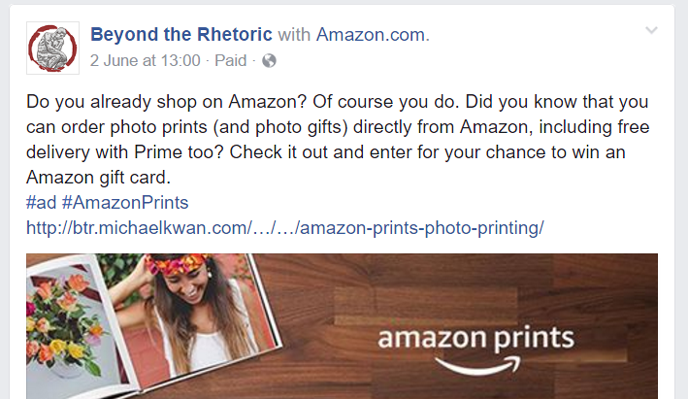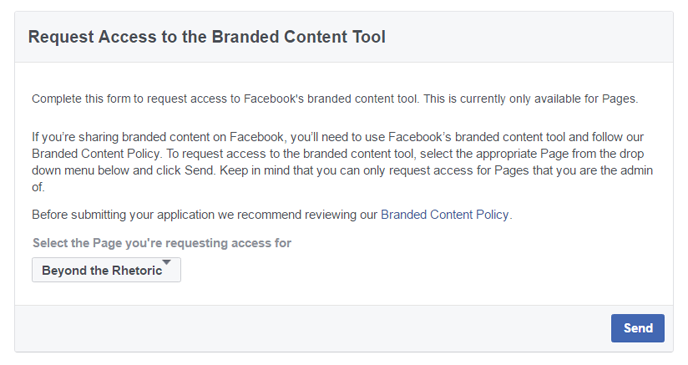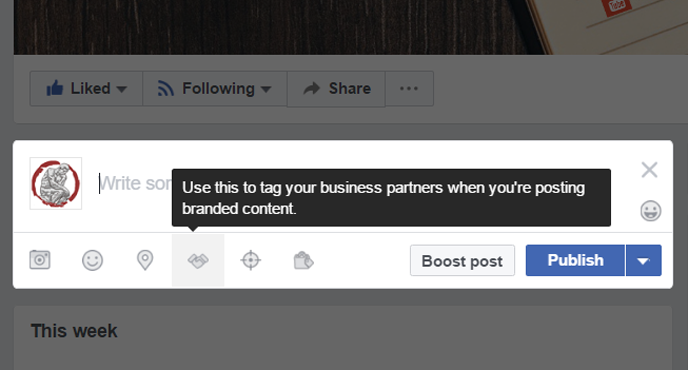When Facebook Business first rolled out its branded content tool in April 2016, it was only open to a select number of publishers and brands on the popular social network platform. Since then, the branded content tool has been opened up to just about anyone with a Facebook page and this is of critical importance for all the bloggers in the audience.
What Is the Branded Content Tool?
In essence, it allows you to indicate that any specific piece of content that you publish on your Facebook page is paid for in some way. It’s important to note here that “paid” isn’t restricted solely to monetary compensation. Even if no cash changes hands, if you were compensated in any way by a partnering brand, you need to disclose this partnership.
If, for example, Netflix provided with you with a one-year subscription in exchange for some promotion through your blog and social media, that requires disclosure and that’s where the branded content tool can come into play. In short, the branded tool with Facebook accomplishes three over-arching goals. First, it is designed to adhere to the FTC regulations for disclosure. Second, it’s meant to provide Facebook users with a transparent experience. And third, it provides Facebook with more data that it can then utilize in whatever fashion it sees fit.
Something that is very important to point out here is that the company or brand that you tag in a branded post will have just as much access to the analytics surrounding that post as you do. They’ll see how many users it reached, where these users are located, and so forth. This can arm them with the data they may desire should they choose to boost the post, for example, or simply if they want to see the ROI they are getting on your paid collaboration.
What Does It Look Like?
Here is an example of the branded content tool at work. I partnered with Amazon on this blog post (and resulting social shares) to promote the Amazon Prints service and related gift card giveaway. You’ll notice three key elements here.

First, “Amazon.com” is tagged as being “with” Beyond the Rhetoric, the same way that you may have “with” posts with your friends on your personal profile.
Second, there is a “Paid” designation next to the timestamp. This is meant to provide a clear indication to users that this post was paid for in some way.
Third, I included the #ad hashtag as part of the blurb. This is not built into the branded content tool, but it is something that you might consider, carrying over the standard best practices for disclosure that you might see on Twitter and Instagram. Other hashtags in this space might include #spon or #sponsored.
How Do I Use It?
It’s clear enough that native advertising and sponsored content is on the rise, especially among bloggers and “influencers,” and the branded content tool addresses that accordingly. So, how do you use it?

The first thing you’ll need to do is request access to the branded content tool by accessing the linked page. Choose the Facebook page where you’d like to use the branded content tool from the pull-down menu and the click the blue “send” button. Approval can take anywhere from a few hours to a few days; your mileage may vary, but assuming everything else is on the up and up, there shouldn’t be any problems getting approved.

When you are ready to make a “branded” post on Facebook, go over to your Facebook page and start typing a status update as you normally would. Along the lower portion of the text entry box, you’ll see the usual set of icons for add-ons, like uploading a photo, tagging a location, or adding a feeling/activity. After your page has been approved for the branded content tool, a new icon will appear. It looks like a handshake.
Click on this to “tag your business partners when you’re posting branded content.” When you do, you’ll be given the opportunity to tag the appropriate company or brand. The search here works the same way as when you tag another company or page in a non-branded Facebook post too.
Once you’ve completed your update and you’re happy with it, you can go ahead and publish (or schedule) it as normal. That’s it. Branded content is not restricted in any other way, so you can still boost it or share it like you would any other content. Some people have said that Facebook is more lenient with words and logos in the images used with a branded post, but again, your mileage may vary.
As Long As You Live Under This Roof…
Yes, I’ve said before that you should never build your business on rented land, but it is also true that if you want to use a tool, you have to play by their rules. In this case, it’s Facebook. And if you don’t want to get in trouble with them and get slapped down even further, you’ll want to start using the branded content tool with your blog’s Facebook page too.